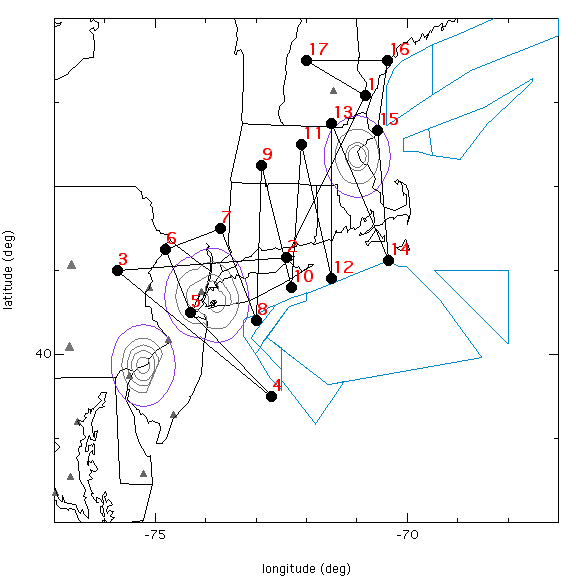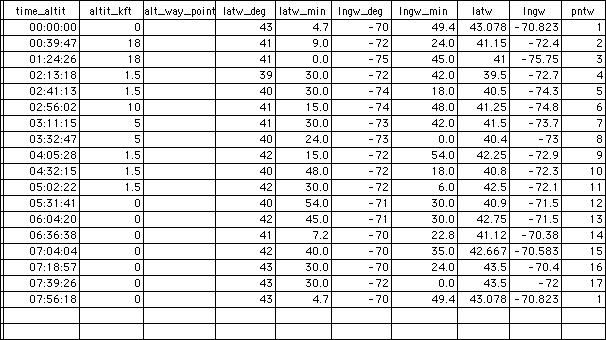WP-3D Daily Summaries
7/20/04 WP-3D Flight Summary
This flight was intended to be the initial flight of a series that would constitute a quasi-Lagrangian experiment that can track the transport and transformation of the New York plume. WP-3D flights were scheduled as a series of three flights made on consecutive days, July 20 - 22. The Univ. of Massachusetts and the University of New Hampshire (UNH) also released balloons to coincide with these flights. Model forecasts predicted that this plume would pass close enough to the Azores so that the British aircraft could intercept it.
The NYC plume was intercepted on several crossings. The chemical signatures at each crossing were clearly detected. Immediately downwind of New York in the freshest pollution the CO levels reached about 400 ppbv. The plume reached up to about 6000 ft. Further out, the aging New York plume was intercepted over the Gulf of Maine with CO reaching 270 ppbv. On the most westerly leg of the flight between 17:00 and 18:00 GMT, the aircraft also encountered the biomass-burning plume at 10,000 ft. with CO levels peaking at about 425 ppbv. The forecast models had predicted the location of the biomass-burning plume. This biomass-burning plume did not have any HNO3, but PANs and ozone was enhanced by about 60 ppbv over the air outside the plume.
The UNH balloon was launched from Orient Point (Long Island) around noon, after the P-3 had measured the vertical pollution distribution in a spiral ascent near that location. The UMASS balloon was launched from Woods Hole, MA about 5 hours later to track the flow over the next two days and assist in locating the New York City plume.
Actual Flight Track

Flight Plan Map

Flight Plan Way Points


